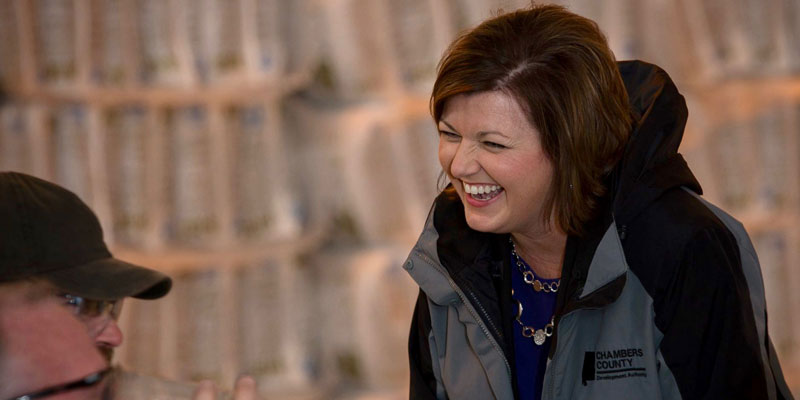Few people understand the mechanics of rural economic development better than Valerie Gray, the executive director of the Chambers County Development Authority. After all, she and her team helped engineer a reversal of the county’s fortunes after its traditional industry imploded.
Gray has led the CCDA for over 22 years. During her tenure, she has overseen a transformation in the east Alabama county’s economy, which has evolved from its textile industry roots into a diversified mix of auto suppliers and other industrial operations.
Between 2011 and 2019, Chambers County attracted projects bringing $773 million in new capital investment and over 2,300 job commitments, according to Alabama Department of Commerce data. Before that, in 2008 alone, her team landed projects involving $137 million in investment and 883 jobs.
Gray is the only rural developer to receive the David R. Echols Distinguished Service Award for exemplary service in economic development. She’s also the incoming chairman of the Economic Development Association of Alabama’s Rural Initiative, working in partnership with Commerce.
She shares valuable lessons about real-world rural economic development in a question-and-answer session.
At one point, Chambers County was really hurting as jobs associated with textile and apparel manufacturing began an exodus. How bad did it get?
I began my career in Chambers County in 1998. The first year we saw more loss than success, with a large portion of our workforce impacted by closing textile mills. In 1984, there were as many as 25,400 jobs in Chambers County associated with West Point Pepperell, not including support jobs, service jobs and other textile facilities.
We had two big blows to our economy when we lost thousands of jobs. From 2001 to 2003, we lost 3,303 jobs in textiles. In 2007-2008, we lost 4,737 jobs. It was devastating, and in early 2009, we hit 19% unemployment — the highest in the state. Typically, I like to finish first but not in this category.
But Chambers County managed to turn things around. What was the turning point?
There was not one particular turning point. It was a process. The first step came in 2001, when we managed to convince our leadership that we needed to purchase land to build up our product inventory. We borrowed over $1 million to purchase 300 acres on Exit 70 on I-85 to develop into a park.
The next step was planning on how to dig ourselves out of this hole. We invested in infrastructure and marketing, and that paid off. In 2006, a small metal stamping company from Bridgman, Michigan saw potential and became the first company to locate in our park. Before long, others followed suit, and in 2008 we had four automotive companies choose to locate in Chambers County Industrial Park. Things were looking up.
Does Chambers County offer any lessons for other rural developers?
Plenty of lessons can be learned. The first lesson I would offer to any community is don’t saturate your economy with one industry sector. Diversification is so incredibly important. If you have a diverse economy, you don’t feel the brunt of shut-downs or downturns in a sector quite as much.
The second lesson is base your incentives and practices on performance. Don’t be so hungry for an announcement that you’re overextending yourself. There’s a balance in a good deal. A good deal has to be good for the company, the city, the county, the state and, most importantly, your citizens.
What are the most difficult challenges associated with rural economic development?
A major challenge is letting companies and people know that you can compete with larger communities. There are great advantages to living and operating a business in a rural community. If you are a smaller company, you become a big fish in a little pond.
Service after the sale is critical, too. It’s much easier to track down your commitments and hold them accountable in a rural county. There’s not nearly as much red tape to go through. Often, people in rural communities hold multiple roles, so relationship-building is simpler.
How can rural developers overcome the challenges?
You have to love your community. You have to walk the walk and talk the talk. My children attend public school here. I live here. I can look company executives in the eye and tell them that 100% of my staff lives in Chambers County and loves it. There’s nowhere else we’d rather be. If you love where you live, it’s your home and no one can sell your home better than you. You have to tell the story. You have to tell companies why they should be here, too.
And you always have to work to make things better. It could be healthcare, schools, broadband, or serving on boards of local small charitable organizations. If people know what you are doing to make things better, you’d be amazed at the amount of respect you get. It’s exhausting to change thinking patterns and roll up your sleeves to do heavy lifting in your small town, but who better to do it than you? It’s your hometown.
(Courtesy of Made in Alabama)
Don’t miss out! Subscribe today to have Alabama’s leading headlines delivered to your inbox.
